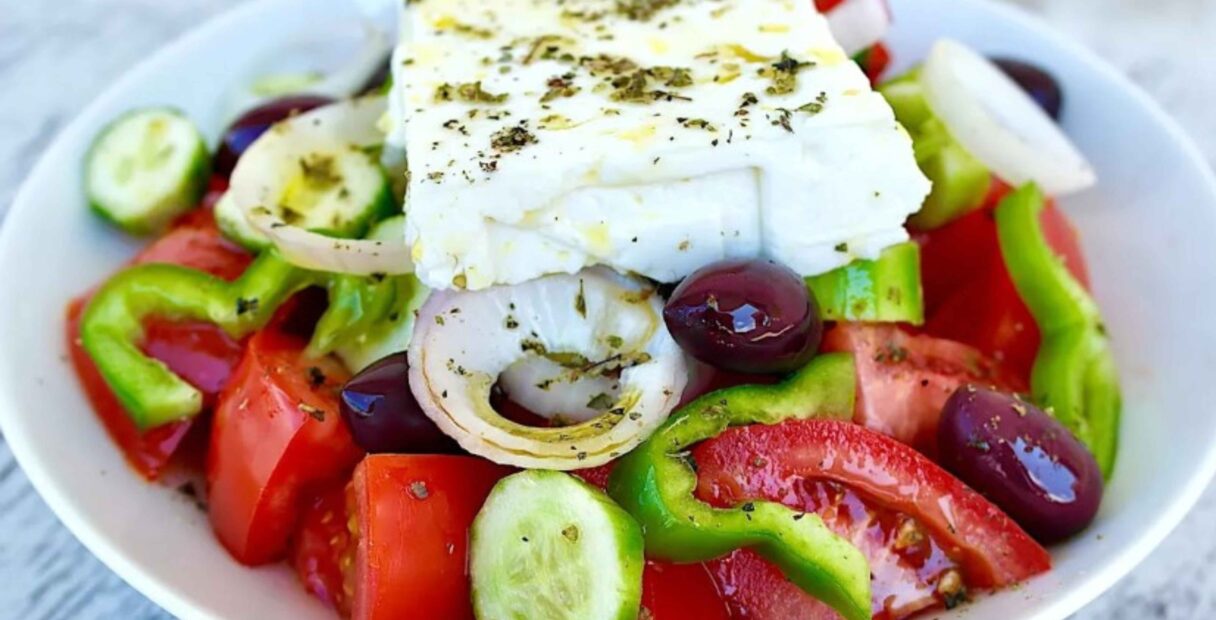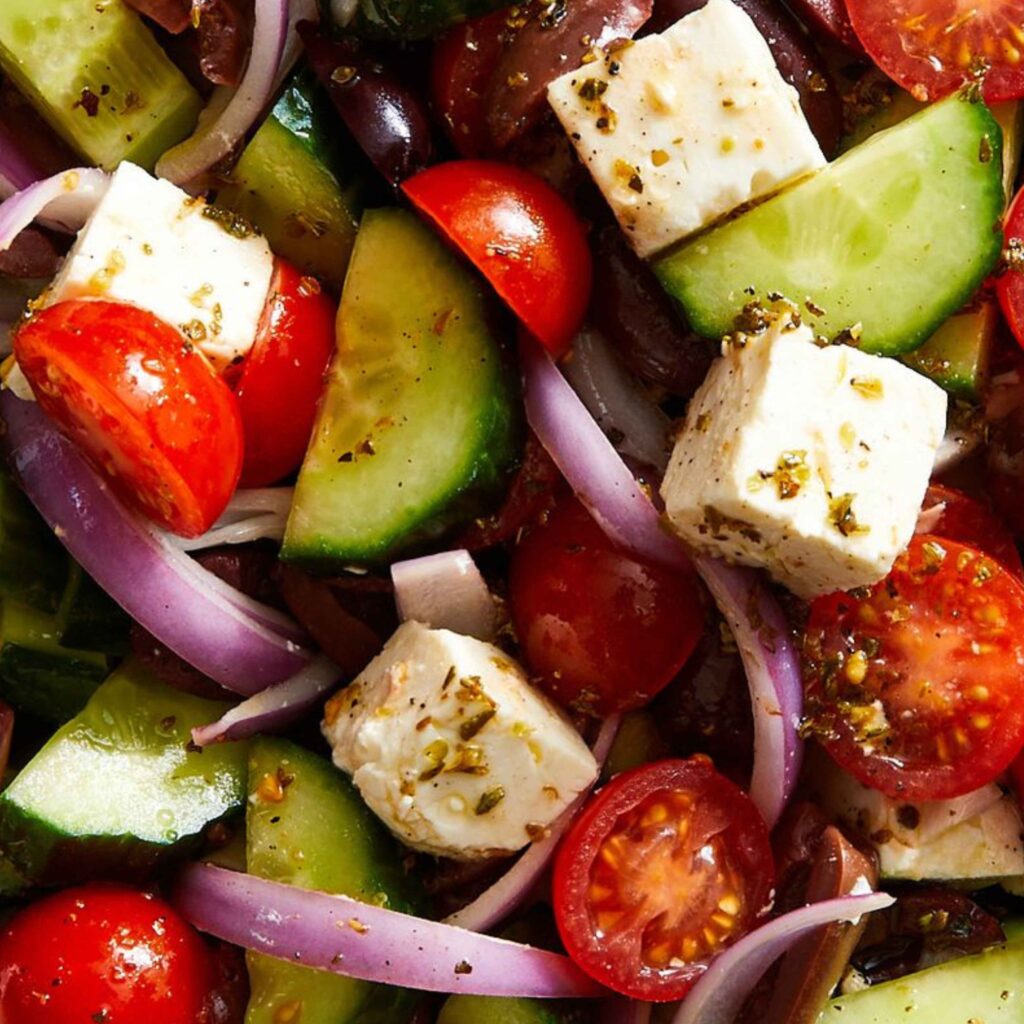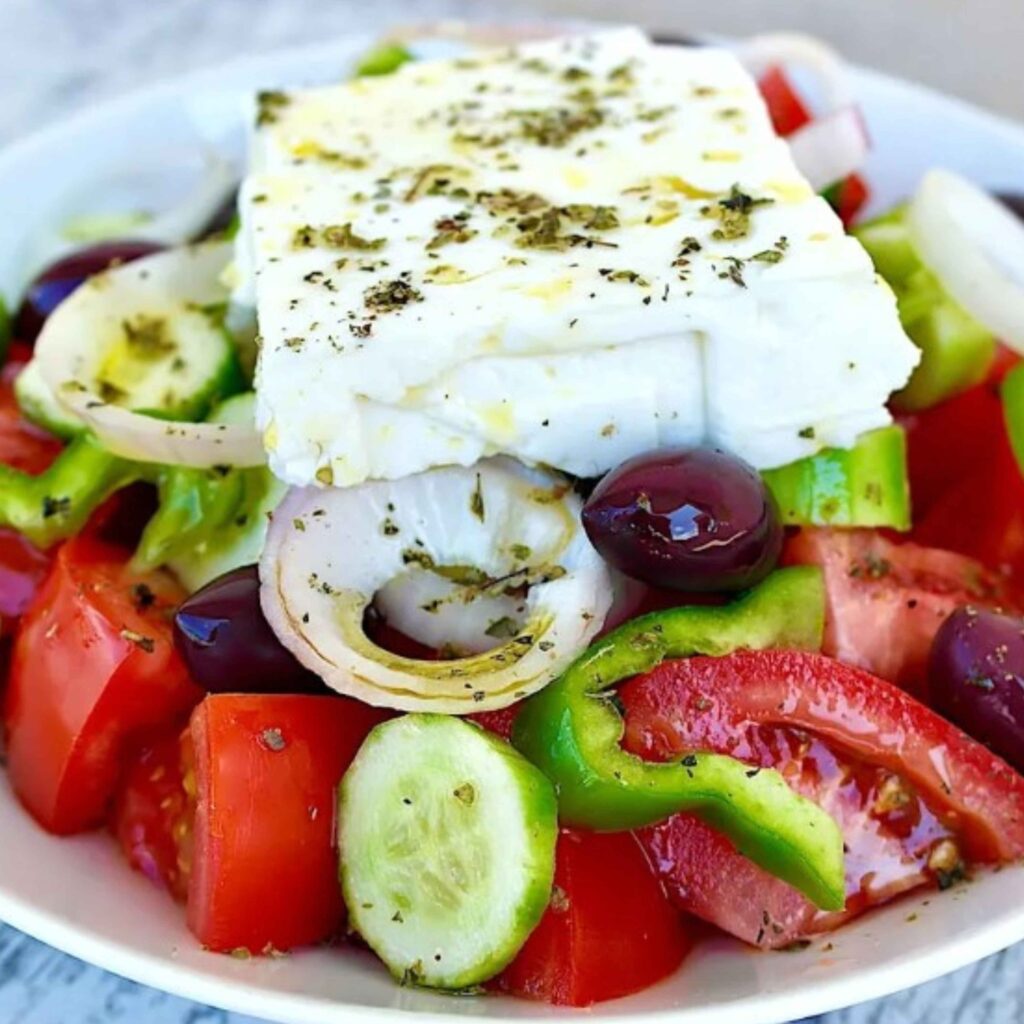
Greek Salad Recipe



The History of Greek Salad
Introduction
Greek Salad, a refreshing and vibrant dish, is a beloved part of Greek cuisine known for its simplicity and bold flavors. This classic salad has a history as rich as the Mediterranean’s fertile lands and sunny skies. In this article, we embark on a journey to explore the intriguing history and cultural significance of Greek Salad, a culinary creation celebrated for its freshness and timeless appeal.
Ancient Origins
A Dish Rooted in Greece
The origins of Greek Salad can be traced back to ancient Greece, where it was a staple of the Mediterranean diet. In its earliest form, the salad featured simple ingredients like tomatoes, cucumbers, onions, olives, and feta cheese, all drizzled with olive oil and seasoned with herbs like oregano.
Mediterranean Heritage
A Taste of the Mediterranean
Greek Salad embodies the essence of Mediterranean cuisine, renowned for its use of fresh ingredients, olive oil, and aromatic herbs. Over time, the salad has evolved, with variations including lettuce, bell peppers, and capers. However, the core elements that make it unmistakably Greek remain unchanged.
Cultural Significance
A Culinary Tradition
Greek Salad is more than just a dish; it is a symbol of Greek hospitality and traditions. It is often served as an appetizer or a side dish, adding a burst of flavor and color to meals. Its simplicity and freshness reflect the Mediterranean way of life, where a love for good food and simple pleasures prevails.
Conclusion
In conclusion, the history of Greek Salad is a captivating journey through the traditions of Greek cuisine. From its ancient origins as a basic combination of fresh ingredients to its status as a beloved classic, Greek Salad continues to captivate with its rich history and cultural significance. Its journey from ancient Greek kitchens to modern dining tables showcases the timeless allure of this refreshing and vibrant dish.
For those eager to explore more about Greek Salad and its regional variations, there are dedicated culinary resources and studies of Mediterranean cuisine that offer deeper insights into this cherished culinary gem.
- Serves: 4 People
- Prep Time: 15 minutes
- Cooking: 15 minutes
- Difficulties: easy
Ingredients
For Cooking
- 2large tomatoes, diced
- 1cucumber sliced
- 1red onion, thinly sliced
- 1 green bell pepper, chopped
- 1/2 cup Kalamata olives
- 1/2 cup crumbled feta cheese
- 1 teaspoon dried oregano
- Salt and pepper, to taste
- Extra-virgin olive oil, for drizzling
- 1/4 cup extra-virgin olive oil
- 2tablespoons red wine vinegar
- 1teaspoon dried oregano
- 1 clove garlic, minced
- Salt and pepper, to taste
For Dressing
Nutritional Information
-
Calories:
180 -
Total Fat:
14g -
Saturated Fat
3.5g -
Cholesterol:
10mg -
Sodium:
350mg -
Total Carbohydrates:
10g -
Dietary Fiber:
3g -
Sugars:
5g -
Protein:
5g
Procedure
Conclusion: Greek Salad invites you to savor the vibrant flavors of the Mediterranean with every bite. Our recipe guide ensures that this classic salad graces your table with authenticity. Whether you’re enjoying the traditional version or exploring variations that suit your taste, Greek Salad offers a taste of freshness and simplicity. Immerse yourself in the medley of vegetables, creamy feta, and zesty dressing, and embark on a culinary journey that captures the essence of Greek cuisine’s beloved salad.
-
Mark As Complete
In a large bowl, combine the diced tomatoes, sliced cucumber, chopped bell pepper, and thinly sliced red onion.
-
Mark As Complete
Add the Kalamata olives and crumbled feta cheese to the bowl.
-
Mark As Complete
Sprinkle dried oregano over the salad ingredients and season with salt and pepper to taste.
-
Mark As Complete
Drizzle extra-virgin olive oil over the salad.
-
Mark As Complete
In a small bowl, whisk together extra-virgin olive oil, red wine vinegar, minced garlic, dried oregano, salt, and pepper to create the dressing.
-
Mark As Complete
Pour the dressing over the salad and gently toss to combine.
-
Mark As Complete
Let the salad sit for a few minutes to allow the flavors to meld.
-
Mark As Complete
Serve the Greek Salad as a refreshing appetizer or as a side dish to complement your main course.
Dawood Ali Mian
Chef Dawood brings a wealth of experience and a diverse culinary background to our kitchen. His culinary training spans the globe, from classic French techniques to contemporary fusion cuisine. Drawing inspiration from both traditional and modern culinary traditions, Chef Dawood’s creations are a harmonious blend of flavors and textures that tantalize the palate.
You also might like
No recipe were found.



